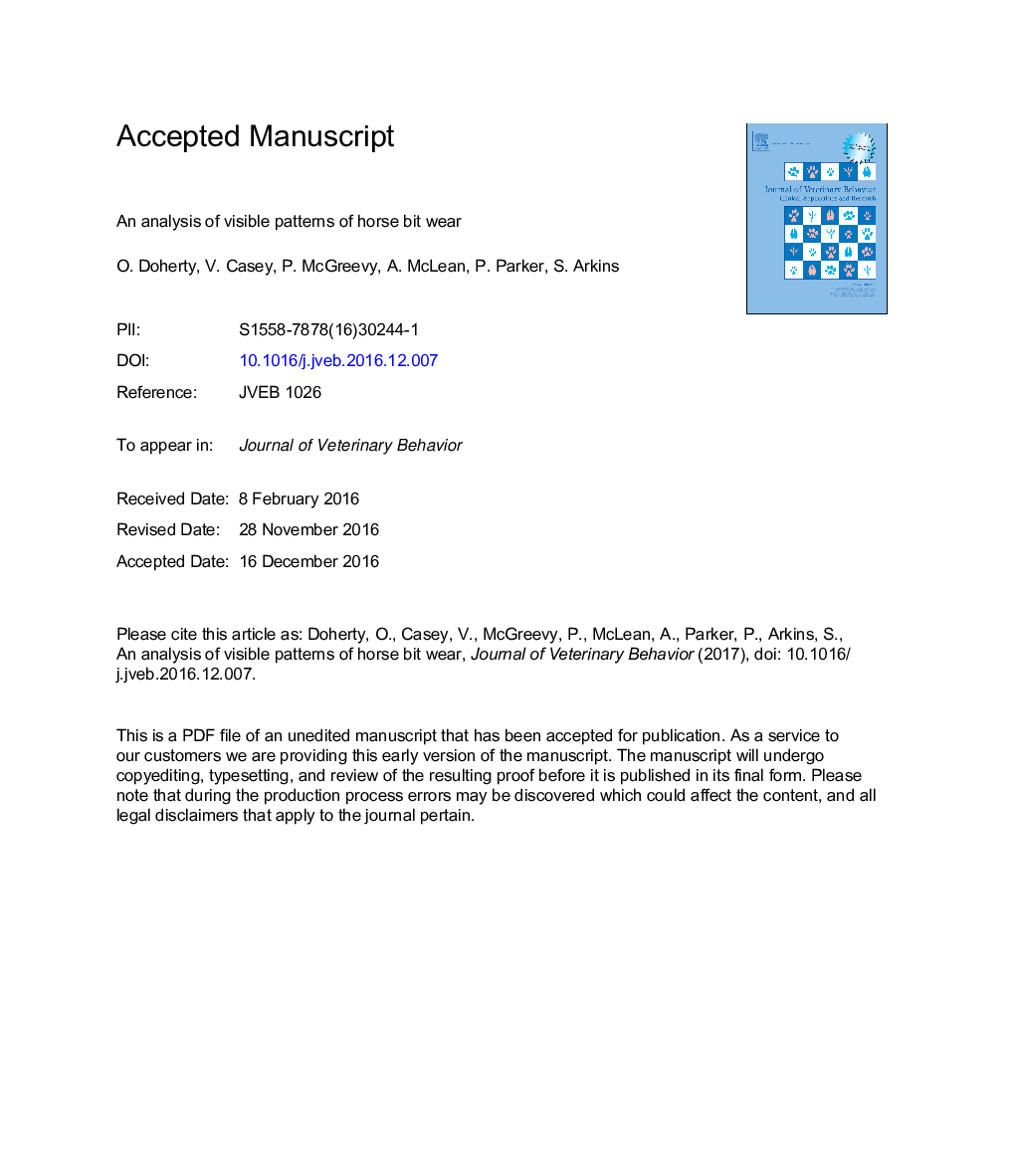| Article ID | Journal | Published Year | Pages | File Type |
|---|---|---|---|---|
| 5535849 | Journal of Veterinary Behavior: Clinical Applications and Research | 2017 | 34 Pages |
Abstract
Horse control is regularly achieved through the application of pressure by a bit against tissue surfaces in the horse's mouth. The precise method of action of the bit in the mouth is still poorly understood. In an assessment of damage and changes seen on the surfaces of bits used in horse control, 5 independent assessors scored 60 photographic images of 15 bits on the most common signs of wear. Each photographic image of the bit was divided into 4-5 separate zones so that different areas on the bit surface could be individually scored. The signs of wear scored for were changes in luster (burnishing), bite marks, food deposits, and salivary staining. Using Cronbach α values, interobserver reliability was found to be high (0.94). Kruskal-Wallis H and Mann-Whitney U tests identified a higher frequency of bite marks on the central or medial areas of the bits compared with the lateral areas (P < 0.001), whereas burnishing was distributed along the whole length of the bits (P > 0.5). The least amounts of both food deposits and salivary staining were found on the caudal aspect of the bits. The findings may reflect the type, level, and location of pressures exerted by oral surfaces against the bit. In addition, the location of bite marks may help identify how the equine reacts orally to the presence of a bit within the oral cavity. This study will help inform experiments seeking to quantify tissue-bit interface pressures under routine exercise conditions.
Related Topics
Life Sciences
Agricultural and Biological Sciences
Animal Science and Zoology
Authors
Orla Doherty, Vincent Casey, Paul McGreevy, Andrew McLean, Pierce Parker, Sean Arkins,
